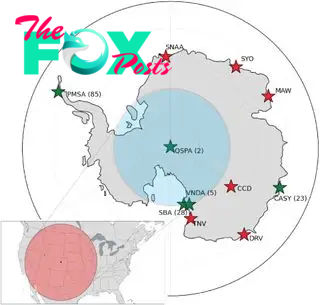Science
Weird blobs lurking near Earth's core may have been dragged from the surface
Strange "blobs" deep in Earth's middle layer may be chunks of ancient continental crust that have been dragged down by tectonic forces, new research suggests.
These blobs, known as ultra-low velocity zones (ULVZs), have long puzzled scientists. They're deep in the mantle, near the boundary with Earth's core, so researchers can only glimpse them by studying earthquake waves as they reverberate around the planet's interior like a bell. These waves slow down significantly in the blob regions, which indicates they are different from the mantle around them.
In the new study, published April 17 in the journal JGR Solid Earth, researchers suggest that these regions might be more widespread than previously believed — and that their composition varies dramatically from blob to blob.
"There is more of that material down there," study lead author Samantha Hansen, a geologist at the University of Alabama, told Live Science. "Whatever that material is."
Related: 2 giant blobs in Earth's mantle may explain Africa's weird geology
In 2012, Hansen and her team began a project to study the upper mantle via a network of seismic monitors in Antarctica, but they soon realized they had a unique dataset. To image the lower mantle with earthquake waves, scientists need the right combination of earthquake locations and sensors, and Antarctica offered a new window into structures beneath the Southern Hemisphere, she said.

"One of the big advantages of using the Antarctic stations was that it let us examine part of the lowermost mantle that hadn't been looked at before," Hansen said.
-

 Science2d ago
Science2d agoInside Capitol Hill’s Latest UFO Hearings
-

 Science2d ago
Science2d agoYou Won’t Want to Miss the Leonid Meteor Shower. Here’s How and When You Can See It
-

 Science3d ago
Science3d agoHere’s What Trump’s Win Means for NASA
-

 Science6d ago
Science6d agoWhy Risky Wildfire Zones Have Been Increasing Around the World
-

 Science6d ago
Science6d agoIt’s Time to Redefine What a Megafire Is in the Climate Change Era
-

 Science1w ago
Science1w ago4 Astronauts Return to Earth After Being Delayed by Boeing’s Capsule Trouble and Hurricane Milton
-

 Science1w ago
Science1w agoThe Elegance and Awkwardness of NASA’s New Moon Suit, Designed by Axiom and Prada
-

 Science1w ago
Science1w agoSpaceX Launches Its Mega Starship Rocket. This Time, Mechanical Arms Catch It at Landing



























